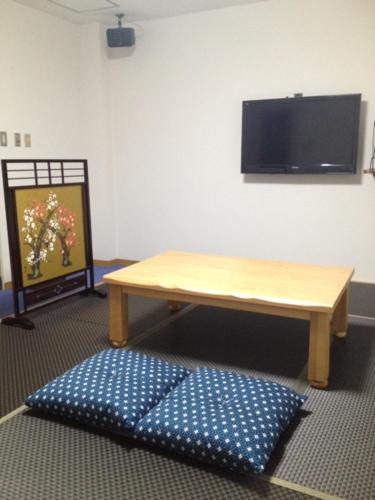Chohoji Temple
menuMenu
Chohoji Temple, home to three National Treasures – the main hall, multi-storied pagoda, and main gate – preserves history and culture. As the family temple of the Kishu Tokugawa clan, the mausoleum of successive feudal lords is also designated as a national historic site.










Highlights
- Explore the National Treasures: the main hall, pagoda, and main gate.
- Visit the mausoleum of successive Kishu Tokugawa feudal lords.
- Find tranquility in the serene temple grounds.
- Enjoy the beautiful scenery throughout the seasons.
- Spend a special time immersed in history and culture.
Basic Information
- Address
- 689 Kamishimozu, Shimozu-cho, Hainan City, Wakayama Prefecture Search for tourist attractions in Wakayama
- Access
- Taxi or a 30-minute walk from Shimozu Station on the JR Kinokuni Line. 15-minute drive from the Hainan Interchange on the Kinki Expressway. Show route
- Op.Hours
- 9:00 AM - 4:00 PM
- Cld.Days
- No holidays
- Fee
- Admission Fee: 300 yen for adults, free for elementary school children and younger (10% discount for groups of 40 or more)
- INFO
- ※We do not provide guided tours within the grounds (for groups or individuals). You can easily walk around the entire area in about 20 minutes. Most group tours allow one hour, including restroom breaks, traveling by bus.
Overview
Recommended nearby attractions
Negoro-ji Temple

A temple brimming with history and tradition, featuring a National Treasure pagoda and numerous Important Cultural Properties. Enjoy beautiful seasonal scenery, with cherry blossoms in spring and autumn leaves in fall.
Zenpuku-in Shakadō

A National Treasure Shakadō showcasing the Zen Buddhist architectural style of the Kamakura period. The serene grounds offer a perfect opportunity to immerse yourself in history and culture.
Koyasan Okunoin

Koyasan Okunoin is a sacred area where Kobo Daishi Kukai rests. Experience the greatness of the Master in a world of silence enveloped in a mystical atmosphere.
Jigen-in Temple

A beautiful temple boasting a National Treasure Tahoto pagoda. It's one of Japan's three famous Tahoto pagodas, alongside Ishiyama-dera and Kongo Sanmai-in Temples.
Doshoji Temple

Doshoji Temple, a historic temple associated with Kūkai (also known as Kobo Daishi), boasts a bell tower designated as an Important Cultural Property of Japan. It's famously the setting for the "Doshoji Engi" tale found in the Konjaku Monogatari-shu, a collection of Japanese folktales from the Heian period.
Kogawadera Temple

Kogawadera Temple is a historic temple known as the third temple on the Saigoku Sanjusanso Kannon pilgrimage route. It's revered as a temple for warding off evil and boasts impressive highlights, including a magnificent main hall and a garden designated as a Place of Scenic Beauty.
Tōkei Jinja Shrine

Registered as a World Heritage site, Tōkei Jinja Shrine boasts a captivating group of shrine buildings that speak to the history of Kumano faith. Spend a peaceful time in a tranquil setting surrounded by history and nature.
Kouon-ji Temple

A temple boasting a Kannon-do hall known as "Kugi Nashi-do (Nail-less Hall)", a National Treasure showcasing precious architectural styles from the Kamakura period.
Kongō Sanmai-in Temple

A branch temple of the Koyasan Shingon sect, boasting numerous historic structures including a National Treasure pagoda.
Kongōbu-ji Danjōgaran

A sacred site in the heart of Koyasan, deeply connected to Kōbō-Daishi.
Nearby Hotels
Aridagawa Onsen Hotel Sunshine

Minsyuku Matsubayashi

Wakayama Marina City Hotel

Kibo

Sea Queen Kainan

Hotel Route-Inn Grand Kainan Ekimae

Manpa Resort

Wakanoura Nature Resort EPICHARIS

Hotel Shinwaka Lodge

Seaside Kancho Ryokan

